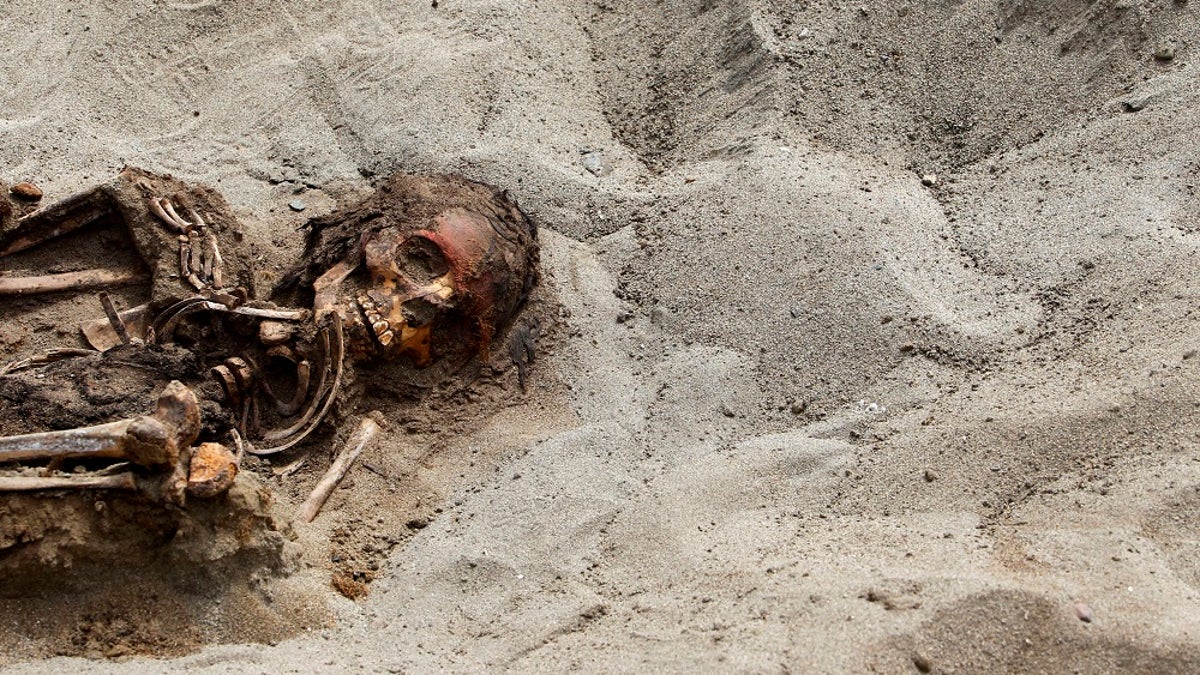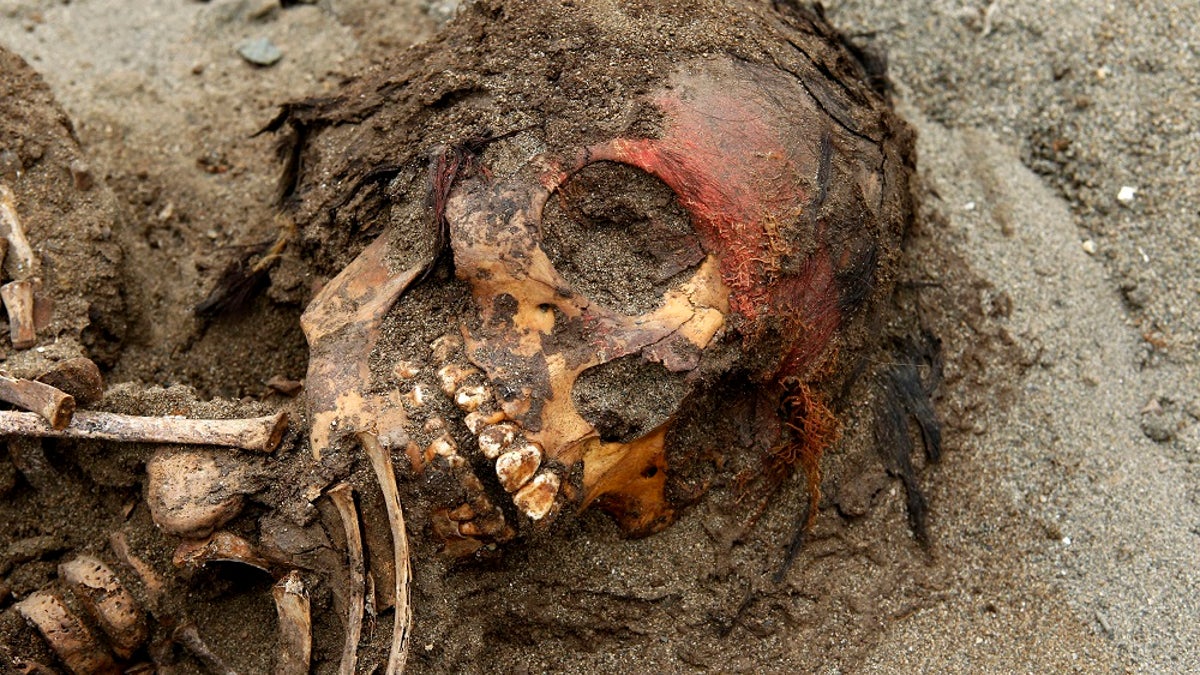
Archaeologists found the remains of 42 children and more than 70 young llamas in 2011, near Trujillo, Peru. By 2016 the number had grown to 140 children and 200 young llamas. (REUTERS)
Archaeologists in Peru may have found the site of the largest single mass child sacrifice in world history.
Archaeologists unearthed the remains of more than 140 children and 200 young llamas from what appears to have been a ritual sacrifice that took place 550 years ago on a bluff along the northern coast, National Geographic reported Thursday.
"I, for one, never expected it," says John Verano, a physical anthropologist who has several decades’ worth of experience in the region. "And I don't think anyone else would have, either."
The archaeological site, formally known as “Huanchaquito-Las Llamas,” is located less than half a mile from the UNESCO World Heritage site of Chan Chan.
At the time of the supposed sacrifice, the area was under the little-known Chimú Empire. By the end of the century, the Chimú Empire had fallen under the rule of the more well-known Incan Empire.

In this 2011 photo, archaeological students clean the remains of children and young llamas in the fishing town of Huanchaquito, Trujillo. (REUTERS)
The site was first brought to the attention by excavators in 2011, when locals discovered eroded human remains in the area. At that time, the remains of only 42 children and 76 llamas were found.
By 2016, the remains of 140 children and 200 young llamas had been discovered at the site. Radiocarbon dating pinpointed the date of the supposed sacrifice between 1400 and 1450.
The condition of the remains suggests the children had incurred cuts to the sternum and rib dislocations for the removal of their hearts.

Discovered in 2011, the excavation sight on the northern coast of Peru has produced evidence of the largest known mass sacrifice in history. (REUTERS)
The children, both boys and girls, ranged from 5 to 14 years old, evidence shows. Based on the layers of mud at the site, archeologists believe the sacrificial ritual was a single event.
Investigations of the site are ongoing with funding supported by the National Geographic Society.